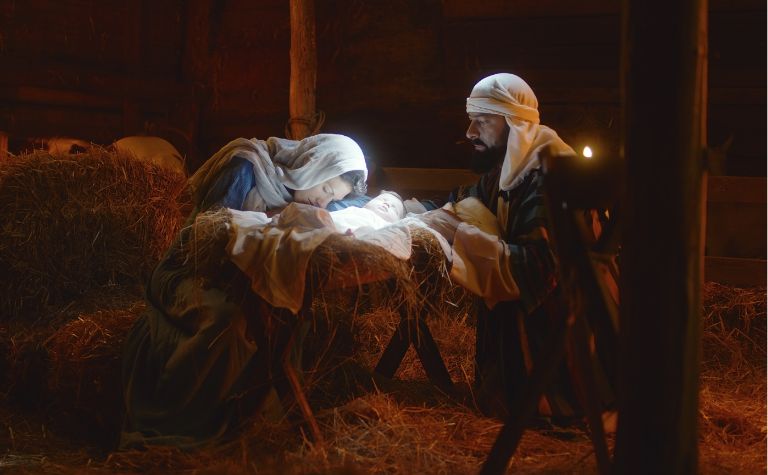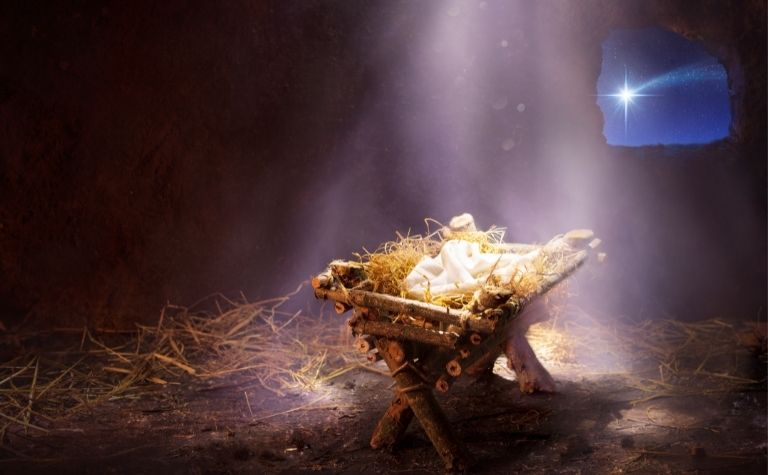Every year, millions around the globe commemorate the birth of Jesus Christ on December 25th, a date synonymous with Christmas and festive celebrations.
However, despite its widespread acceptance, some historians, scholars, and curious minds have questioned if this is the actual date of Jesus’s birth.
One intriguing alternative posits that Jesus might have been born in March. Let’s explore the origins of the December tradition and examine the arguments suggesting a March birth.

The December Tradition: A Brief Overview
The tradition of celebrating Jesus’s birth on December 25th can be traced back centuries.
Some historians believe this date was chosen to align with or replace certain winter solstice celebrations of the pagan calendar, thereby easing the transition for people of that time to Christianity.
As the Roman Empire embraced Christianity, the 25th of December gradually became established as the date to celebrate the Nativity.
While many customs and traditions associated with Christmas have their roots in earlier winter celebrations, it’s worth noting that the Bible does not specify the exact date of Jesus’s birth, leaving room for speculation and alternative theories.
Arguments for a March Birth
A closer examination of various accounts and clues can provide some compelling arguments for Jesus being born in the springtime, possibly in March.
Shepherds and Their Flocks
The Gospel of Luke mentions shepherds tending to their flocks by night when they were informed of Jesus’s birth.
Some argue that winter, especially December, would be too cold for shepherds to keep their flocks outside overnight in the Judean hills.
If this argument holds, a spring birth, perhaps in March when the weather is milder, seems more plausible.
The Star of Bethlehem
The mysterious Star of Bethlehem, which the Magi followed, plays a central role in the birth narrative.
Some astronomical theories suggest that specific celestial events, which could have been interpreted as this star, took place in the spring months.
Historical Records
While definitive records specifying Jesus’s birthdate are elusive, some early Christian writings hint at a spring birth without pinpointing an exact date. March, being in spring, aligns with these hints.
The Course of Abijah
An interesting piece of evidence comes from the Gospel of Luke, which discusses the priestly duties of Zechariah, the father of John the Baptist.
By tracing Zechariah’s priestly course of Abijah and the subsequent announcement of John’s conception, some scholars believe they can approximate John’s birth month and, by extension, estimate Jesus’s birth month, given their close age difference.
These calculations often lead to a spring timeline for Jesus’s birth.

Counterarguments and Other Theories
As with any historical or scholarly debate, there are counterarguments against the March birth theory:
Weather Assumptions: While many believe that December would be too cold for shepherds, others point out that winters in ancient Judea were milder than many assume.
Thus, it’s conceivable that flocks were out in late December.
December Birth Records: Some early Christian writings do suggest a winter birth for Jesus, further complicating the debate.
Other Months: March isn’t the only alternative proposed.
Based on various scripture and historical data interpretations, some theories suggest that Jesus might have been born in September or October.
Theological Perspective
For many, the exact date of Jesus’s birth, whether in December, March or any other month, is secondary to the broader significance of his life and teachings.
The message of hope, love, and salvation associated with Jesus is often deemed more crucial than pinning down a specific birthdate.
Various Christian denominations around the world, while holding their unique traditions and celebrations, tend to emphasize the transformative impact of Jesus’s life over debates about his precise birth date.

Symbolism Over Specifics
Throughout history, symbolism has often taken precedence over specific details.
In the case of Jesus’s birth, the symbolic importance of certain elements is clear.
For instance, the Star of Bethlehem, irrespective of its astronomical origins, is emblematic of guidance, hope, and divine intervention.
Similarly, the shepherds, often seen as humble figures, receiving the divine message first underscores themes of humility and grace.
The choice of December 25th, whether rooted in aligning with existing celebrations or an accurate representation of Jesus’s birthdate, holds profound symbolism.
Winter, marked by the longest night of the year, is followed by gradually increasing daylight, symbolizing the emergence of hope and light in the darkness.
Celebrating Jesus’s birth during this time aligns with the theme of light overcoming darkness, a core tenet in many Christian teachings.
Furthermore, if one considers March as a potential birth month, it’s during spring, a time symbolic of new beginnings and rebirth.
Thus, regardless of historical accuracy, both December and March carry deep symbolic meanings that can resonate with the essence of Jesus’s teachings and his role in Christian belief.
While the debate on the exact date persists, the symbolic layers intertwined with various elements of the Nativity story offer profound reflections and insights.
Influence on Art and Literature
The birth of Jesus, irrespective of its precise month, has left an indelible mark on art and literature for centuries.
Painters, writers, and musicians have all sought inspiration from the narrative, producing works that transcend time and geography.
Each interpretation, influenced by the era it was created in, adds a unique dimension to the story, showcasing the adaptability and universality of the tale.
Renaissance painters, for instance, often depicted the Nativity against the backdrop of their contemporary surroundings, bridging the ancient tale with the then-present day.
This approach made the story more relatable to the audience of the time and emphasized the timeless nature of the narrative.
Literature, too, has been replete with references to Jesus’s birth, sometimes subtly alluding to themes of hope, sacrifice, and divine intervention.
The speculated March birth has also influenced certain interpretations, with spring settings providing a canvas of bloom and rebirth.
Music, especially Christmas carols, though largely centered around the December narrative, capture the emotions and essence of the story, resonating with listeners irrespective of their beliefs about the exact birth month.
This vast array of artistic expressions underscores the profound impact and enduring appeal of Jesus’s birth story, reinforcing its significance in cultural and historical contexts.
Conclusion
The question of “Was Jesus born in March?” provides a fascinating exploration into history, scripture, and astronomy.
While December 25th remains the widely accepted and celebrated date for the birth of Jesus, alternative theories, including the possibility of a March birth, highlight the complexities and mysteries surrounding the life of one of history’s most influential figures.
Regardless of the actual date, the enduring legacy and message of Jesus Christ continue to resonate and inspire people across generations and cultures.
Related Questions
Joseph, the husband of Mary and the earthly father of Jesus Christ, is depicted in the Gospels as humble, law-abiding, and obedient. In many Christmas scenes, such as in displays of the manger, he is...
The virgin Mary, the mother of Jesus, is one of the most fascinating people in the Bible. For 2,000 years, people of different eras and cultures have marveled at her faith in God. Mary's story in the...
